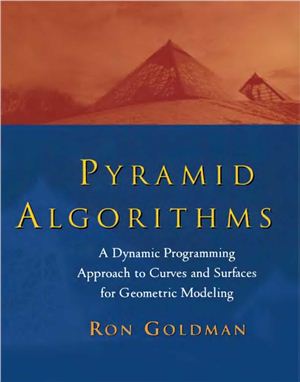Elsevier Science, 2002. ISBN:1558603549
Pyramid Algorithms presents a unique approach to understanding, analyzing, and computing the most common polynomial and spline curve and surface schemes used in computer-aided geometric design, employing a dynamic programming method based on recursive pyramids.
The recursive pyramid approach offers the distinct advantage of revealing the entire structure of algorithms, as well as relationships between them, at a glance. This book-the only one built around this approach-is certain to change the way you think about CAGD and the way you perform it, and all it requires is a basic background in calculus and linear algebra, and simple programming skills.
Written by one of the world's most eminent CAGD researchers
Designed for use as both a professional reference and a textbook, and addressed to computer scientists, engineers, mathematicians, theoreticians, and students alike
Includes chapters on Bezier curves and surfaces, B-splines, blossoming, and multi-sided Bezier patches
Relies on an easily understood notation, and concludes each section with both practical and theoretical exercises that enhance and elaborate upon the discussion in the text
Foreword by Professor Helmut Pottmann, Vienna University of Technology
Pyramid Algorithms presents a unique approach to understanding, analyzing, and computing the most common polynomial and spline curve and surface schemes used in computer-aided geometric design, employing a dynamic programming method based on recursive pyramids.
The recursive pyramid approach offers the distinct advantage of revealing the entire structure of algorithms, as well as relationships between them, at a glance. This book-the only one built around this approach-is certain to change the way you think about CAGD and the way you perform it, and all it requires is a basic background in calculus and linear algebra, and simple programming skills.
Written by one of the world's most eminent CAGD researchers
Designed for use as both a professional reference and a textbook, and addressed to computer scientists, engineers, mathematicians, theoreticians, and students alike
Includes chapters on Bezier curves and surfaces, B-splines, blossoming, and multi-sided Bezier patches
Relies on an easily understood notation, and concludes each section with both practical and theoretical exercises that enhance and elaborate upon the discussion in the text
Foreword by Professor Helmut Pottmann, Vienna University of Technology

